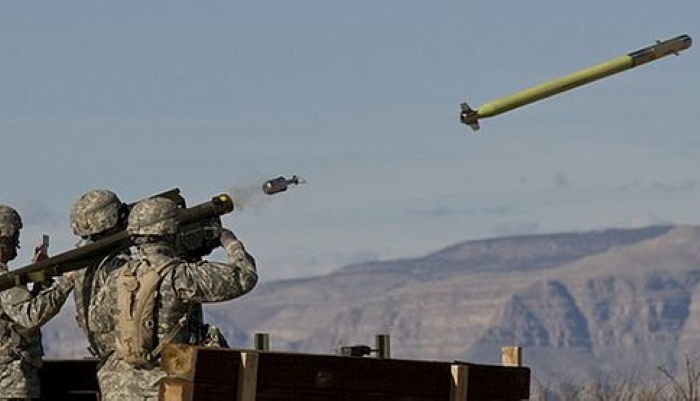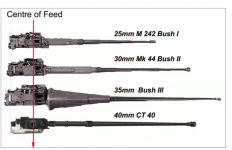Fair points FJAG but if we are content saying that we can rerole LAV to Light to Para and back again ...
I'm not one of those "we". I tend to think that there's a significant difference between armoured and mech and light infantry. I see Armoured infantry more like you do as a very specialized role with specialized equipment (like a CV 90) and tactics - I don't see LAVs as part of that. Our LAVs I see more in the Stryker brigade role. In that respect, yes, I see the LAV battalions as being able to, in fact trained to, fight dismounted and therefore "light capable".
... I have to ask how much easier it is to rerole an infantry battalion from an anti-personnel direct fire role to an anti-tank direct fire role.
I agree that training is involved but is the difference greater than that of conducting hasty and prepared attacks and defences; in open, close or urban terrain; in boreal, jungle, arctic and desert environments?
I agree that fire discipline is going to be a major issue when, instead of the individual soldier having 300 rounds of 5.56 at his disposal for the anti-personnel battle, in the antii-tank battle it will be a case of the Section Leader having half a dozen 84mms or the Platoon Leader having a dozen ATGMs and some Swingfires. It will require different templates for different kill zones and different call of shots.
But I don't accept that swapping an infantry section from clearing houses to hunting tanks is a particularly difficult problem.
I may not be the best guy in this forum to ask that question. I've had the Reg F Combat Team Commanders course and Command and Staff Course, worked as a FOO for several years with mostly mech battalions and ran a Res rifle company (platoon +) for a few years but compared to the more knowledgeable people on this board my experience is indeed limited. That said, IMHO, I think it's very difficult to rerole folks (especially once deployed). One can always rerole and retrain but there is a time factor involved with that and most people underestimate the time needed. The training on the weapon system is perhaps the easiest. The training on the tactics is significantly harder and, for a start, requires that there are trained and experienced officers and NCOs available to conduct the training.
And - following up - how exactly do we define a HEAVY ATGM when Javelins, issued at Section level in many armies, cover the 2 to 5 km band. Vehicle mounted systems, the next band up, are reaching out to 50 km.
I have no problem with the 50 km band being an Arty responsibility. But the 5 km band is no longer strictly a Bn responsibility. That band has moved down to the Coy/Pl level.
It's not a range thing. Maybe it was when we layered M72s and Carl Gs and TOWs. But I doubt very many direct fire weapons operators in a rifle company will ever engage at 5 kms (except in the Middle East). For me it's more a question of how many operators are needed for a crew served weapon, a gunner, a loader? an ammo handler, a communicator/driver? How mobile does the system need to be when in contact? How many systems work as mutually supporting teams - two - three? Are these systems part of a main defence line or part of a deep guard? What role do they provide while the force is mobile - flank protection - rear guard - advance guard - how are they controlled?
During my training we had both close in ATk weapons in the rifle company and ATGM platoons with the battalion. During about 80% of the operational phases, the ATGM platoon did it's job nowhere near a rifle company. Only once you got into the last phase of a defensive operation would they be covering anywhere near the rifle companies.
It's very much the same with air defence. Yes we have manpads which are much easier to operate than the Blowpipe but by the time that you tie in radars and air support coordination and selected air corridors and threat vectors and optimum firing positions you end up with a force that is constantly moving and repositioning itself across the battlefield to provide the best coverage.
Rifle companies rarely occupy a piece of ground that's optimal for heavy ATGMs or GBAD. Even if they have a weapon system that reaches out and touches someone at 5 Kms the bulk of the rifle company's weapon systems operate in a band from several hundreds of metres to maybe a kilometre at best and the coy will be sited to exploit those ranges (yup, I know the 25mm reaches out further than that but where will it be sited in whatever phase you are in).
OTOH, an ATGM platoon (or better yet an ATGM coy) can be sited to fully exploit the longer ranges from positions that are nowhere near the rifle company. Each will have its own command structure to exploit its weapon systems to the best advantage. Dumping all of that on a company commander will almost guarantee that something will not operate at its optimum - especially when you are dealing with more widely dispersed operations and you need to cover the gaps because the rifle companies are, in all probability, no longer mutually supporting. I can't think of anything more difficult than a rifle company commander trying to control half of his company falling back from their long-range ATk or AD firing positions back into the main position to start fighting with a set of medium and then light weapons as the battle closes in on him while in the meantime his position is being pounded by 152mm splinters.
Like you, I believe we aren't postured right. And I think the biggest fiction we tell ourselves is that we are a multi-purpose and agile force - and then go through a three-year managed readiness cycle with a specialized six month predeployment training cycles for a particular mission. That's about as far away as you can get from the definition of multi-purpose and agile. Adding greater complexity to the rifle company will not move us forward. We need to clearly establish what a rifle company is to do (and by that I mean what effects can it deliver with the bulk of the weapons system it has [or ought to have] and not with the additional ones we could foist on it without regard if they realistically can employ them) and then build and provide the additional specialist enablers needed to cover everything else. By all means give the rifle company anti-armour weapons that work well within their zone (like the Carl G) but don't try to spread the company all over the battlefield.
And just let me reinforce what I said before. I distinguish between the job that an armoured infantry company does in a combined arms battalion in an armoured brigade with the job done by a light or LAV rifle company in a mech brigade. An armoured infantry company requires a whole different suite of tools most of which will be bolted onto their IFVs.








